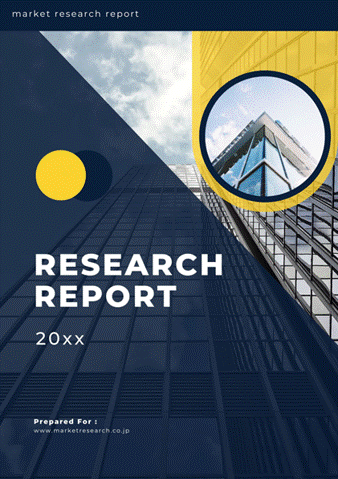 | • レポートコード:MRC2108A266 • 出版社/出版日:Mordor Intelligence / 2021年7月 • レポート形態:英文、PDF、90ページ • 納品方法:Eメール(受注後2-3営業日) • 産業分類:自動車 |
| Single User | ¥555,000 (USD3,750) | ▷ お問い合わせ |
| Team User | ¥629,000 (USD4,250) | ▷ お問い合わせ |
| Corporate License | ¥1,036,000 (USD7,000) | ▷ お問い合わせ |
• お支払方法:銀行振込(納品後、ご請求書送付)
レポート概要
| Mordor Intelligence社は、2020年に170億ドルであった自動車用アンチロックブレーキシステムのヨーロッパ市場規模が、2021年から2026年の間に年平均6%以上成長し、2026年までに250億ドルに達すると予測しています。本調査レポートは、ヨーロッパの自動車用アンチロックブレーキシステム市場について調査・分析し、イントロダクション、調査手法、エグゼクティブサマリー、市場動向、車両タイプ別分析、技術別分析、需要別分析、国別分析、競争状況、市場機会/将来の見通しなどを掲載しています。 |
The European Anti-Lock Braking System market accounted for USD 17 Billion in 2020, and it is expected to reach USD 25 Billion by 2026, projecting a CAGR of over 6% during the forecast period.
Covid-19 had a severe impact on the market due to the indirect consequence of low automotive production and sales registered in 2020 due to the pandemic.
Post pandemic, with the projected increase in demand for autonomous vehicles, increased need for individual mobility, and the growing need for better safety standards in the vehicles that is backed up by the governments of different countries, the market is expected to improve in terms of revenue and value.
These days, Anti-lock braking system (ABS) is used in every modern car. It automatically provides optimum braking force short of lockup. The computers modulate the brake pressure to make sure that all wheels maintain traction, allowing them to brake and steer at the same time.
Europe is known for its swift and stringent adaption towards road safety. Countries such as Germany and the United Kingdom have mandated entry-level vehicles as well to install ABS system just as importantly as seatbelts we today see in every car.
However, ABS in 2-wheelers, especially in cost-conscious markets, sometimes offer options for a single channel, with only a front-wheel equipped with an ABS. Also, entry-level cars are not provided ABS with a higher safety system. However, with emerging technologies and growing government policies, entry-level and 2- wheelers will see a higher adoption towards ABS systems since results have shown that even a lower ABAS equipped system may increase braking distances.
Key Market Trends
Autonomous Emergency Braking System Could Drive the Future Growth of The Market
For 4-wheelers, research indicates ABS is quite useful, reducing the overall crash-involvement rate by 6% in passenger cars and by 8% in lightweight vehicles for non-fatal crashes, which is statistically significant. However, for fatal crashes, Antilock brake systems (ABS) have close to a zero-net effect on the crash involvement, and ABS brakes do not appear to have any effect on rear-end collisions.
In 2-wheelers, 93% of motorcycle falls could have been avoided or reduce the severity of the accident. Also, a reduction in fatal and severe injuries to motorcycle drivers by 8 to 10%. suggests that ABS might reduce the number of crash victims especially on wet pavements, in improving overall vehicle stability during braking, preserving the ability to steer, and reducing stopping distances on many surfaces
But, earlier information from the camera or LiDAR sensors was relatively slow, and these systems were only able to brake sufficiently to avoid a collision with a relative velocity of around 15 kph and termed as “City-AEB” or “low-speed AEB.” They can, therefore, detect obstacles at higher travel speeds. Thus, the Autonomous Emergency Braking System could drive the future growth of the market.
Germany Leads The European Market For ABS Usage
Continuous efforts are being made by governments across the world to reduce the rate of accidents. Mandating anti-lock braking systems market in all automobiles will remain the driving the factor
European Transport Safety Council (ETSC) called for Automated Emergency Braking systems to be fitted as standard on new cars in the EU. Although options were available as an extra feature, especially on low-cost vehicles. But, ETSC believes that ABS technology, along with Electronic Stability Control (ESC), should be compulsory for cars in the EU governments across the world to reduce the rate of accidents.
In 2019 around 91.1% of registered motorcycles were had anti-lock brake systems as per The Insurance Institute of Highway Safety reported.
With Germany being home to major luxury, sport, and supercar carmakers like Mercedes Benz, Porsche, Audi, and BMW, the use of Anti-Lock Braking System in the vehicles being manufactured by these companies creates a huge market opportunity for the industry.
Competitive Landscape
The Europe Automotive Anti-Lock Braking System Market is consolidated with already existing players. The major players are Robert Bosch GmbH, Autoliv Inc., Continental Reifen Deutschland GmbH, DENSO Corporation, and ZF Friedrichshafen AG, among others. As the demand for Anti-Lock Braking is growing in the region, the OEM manufacturers are trying to have the edge over its competitors by making joint-ventures, partnerships, launching new products with advanced technology. For instance,
In IIHS crash tests, the BMW 5 Series earned its reputation by offering standard with automatic emergency braking, forward collision warning, lane departure warning, blind-spot monitoring, daytime pedestrian detection, rear cross-traffic alert, adaptive cruise control, a rearview camera, and front and rear parking sensors.
Reasons to Purchase this report:
- The market estimate (ME) sheet in Excel format
- 3 months of analyst support
1 INTRODUCTION
1.1 Study Assumptions
1.2 Scope of the Study
2 RESEARCH METHODOLOGY
3 EXECUTIVE SUMMARY
4 MARKET DYNAMICS
4.1 Market Driver
4.2 Market Restraint
4.3 Porters Five Force Analysis
4.3.1 Threat of New Entrants
4.3.2 Bargaining Power of Buyers/Consumers
4.3.3 Bargaining Power of Suppliers
4.3.4 Threat of Substitute Products
4.3.5 Intensity of Competitive Rivalry
5 MARKET SEGMENTATION
5.1 Vehicle Type
5.1.1 Motorcycles
5.1.2 Passenger Cars
5.1.3 Commercial Vehicles
5.2 Technology type
5.2.1 Sensors
5.2.2 Hydraulic unit
5.2.3 Electronic control unit
5.3 Demand Type
5.3.1 OEM
5.3.2 Replacement
5.4 Country
5.4.1 Germany
5.4.2 United Kingdom
5.4.3 Italy
5.4.4 France
5.4.5 Rest of Europe
6 COMPETITIVE LANDSCAPE
6.1 Vendor Market Share
6.2 Company Profiles
6.2.1 Robert Bosch GmbH
6.2.2 Continental AG
6.2.3 DENSO Corporation
6.2.4 ZF AG
6.2.5 Autoliv Inc.
6.2.6 Hitachi Automotive Systems Ltd.
6.2.7 Hyundai Mobis Co., Ltd.
6.2.8 Nissin Kogyo Co.
6.2.9 WABCO
7 MARKET OPPORTUNITIES AND FUTURE TRENDS